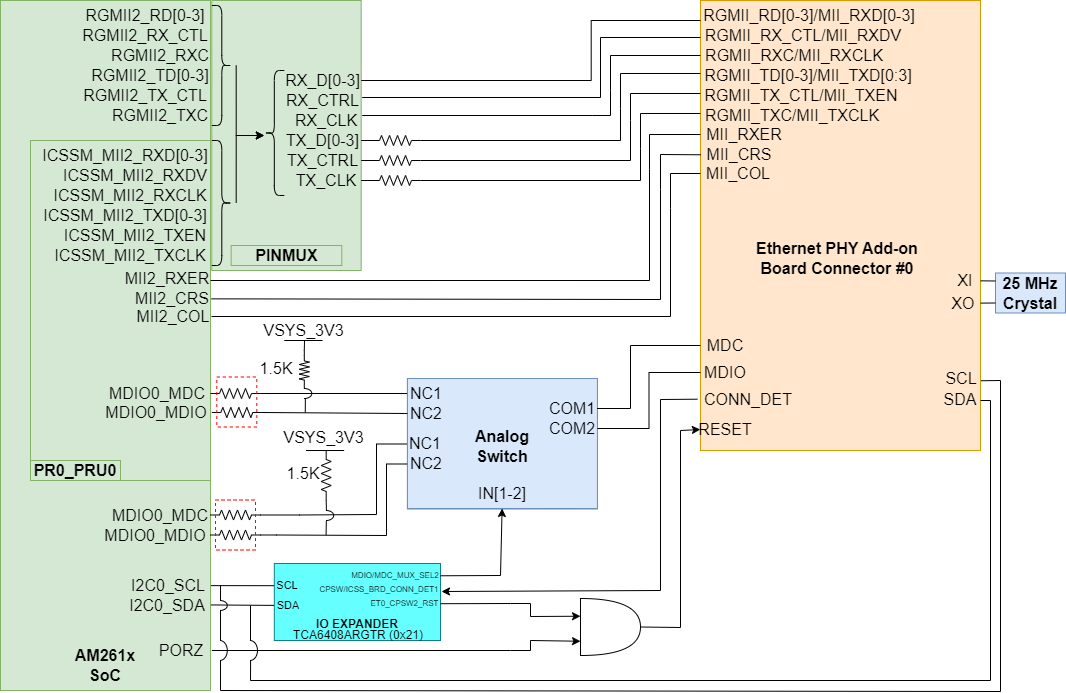SPRUJF1 November 2024 AM2612
ADVANCE INFORMATION
- 1
- Description
- Key Features
- 1LaunchPad Module Overview
-
2Hardware Description
- 3.1 Board Setup
- 3.2 Functional Block Diagram
- 3.3 GPIO Mapping
- 3.4 Reset
- 3.5 Clock
- 3.6 Memory Interfaces
- 3.7 Ethernet Interface
- 3.8 I2C
- 3.9 Industrial Application LEDs
- 3.10 SPI
- 3.11 UART
- 3.12 MCAN
- 3.13 FSI
- 3.14 JTAG
- 3.15 TIVA and Test Automation Pin Mapping
- 3.16 LIN
- 3.17 ADC and DAC
- 3.18 EQEP and SDFM
- 3.19 EPWM
- 3.20 USB
- 3.21 BoosterPack Headers
- 3Known Issues and modifications done on LP-AM261 RevE1
- 4Additional Information
- 5References
- 6Revision History
2.7.1 Ethernet PHY Add-on Board connector #0 - CPSW RGMII/ICSSM
The AM261x LaunchPad has a 48-pin Ethernet PHY add-on board connector connected to either CPSW RGMII or one on-die Programmable Real-time Unit and Industrial Communication Sub System (PRU-ICSS). The RGMII CPSW port and ICSSM are internally pinmuxed on the AM261x SoC. For more information on the internal muxing of signals refer to Pinmux Mapping . AM261x internal Pinmux is used to select between the RGMII or PRU-ICSS signals. Ethernet port connector can be connected to the Ethernet daughtercard that comprises a PHY device and RJ45 connector.
 Figure 2-14 Ethernet PHY Add-on Board connector #0
Figure 2-14 Ethernet PHY Add-on Board connector #0The MDIO signal from the SoC to the ethernet port connector requires 1.5kΩ pullup resistors to the 3.3V system supply voltage for proper operation. There is an analog switch (TS5A23159DGSR) that selects between the CPSW MDIO/MDC and the ICSSM MDIO/MDC signals to be routed to the Ethernet port connector. This analog switch is controlled by an IO expander signal that selects between CPSW MDIO/MDC and ICSSM MDIO/MDC signals.
The reset input for the PHY from Ethernet port connector is controlled by the PORz AM261x SoC output signal.